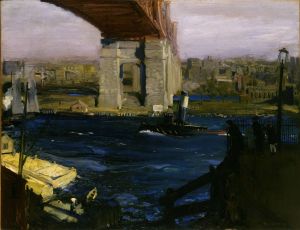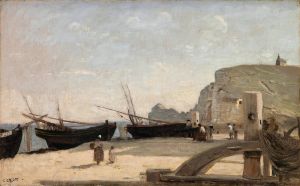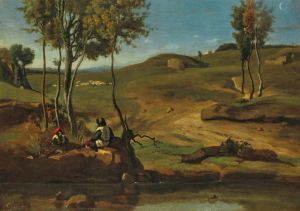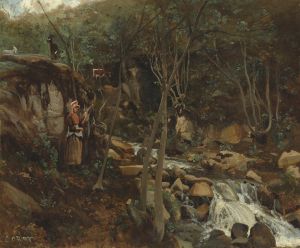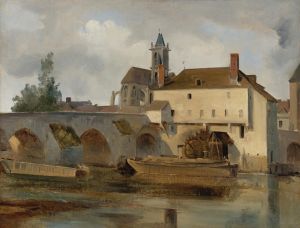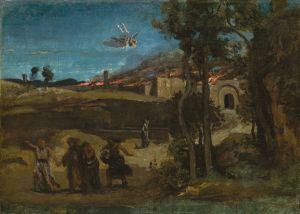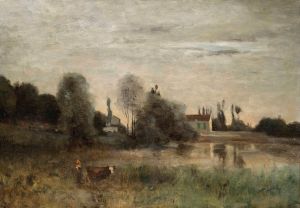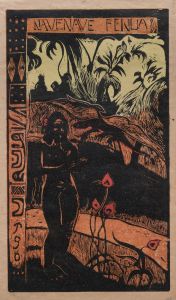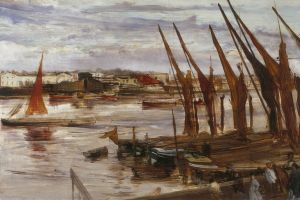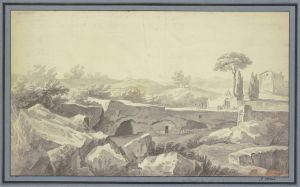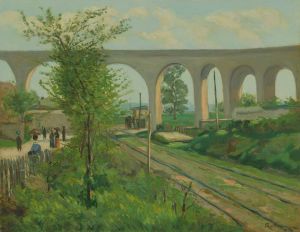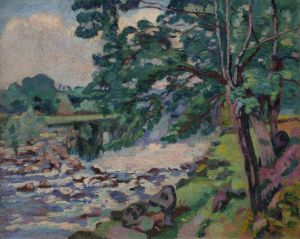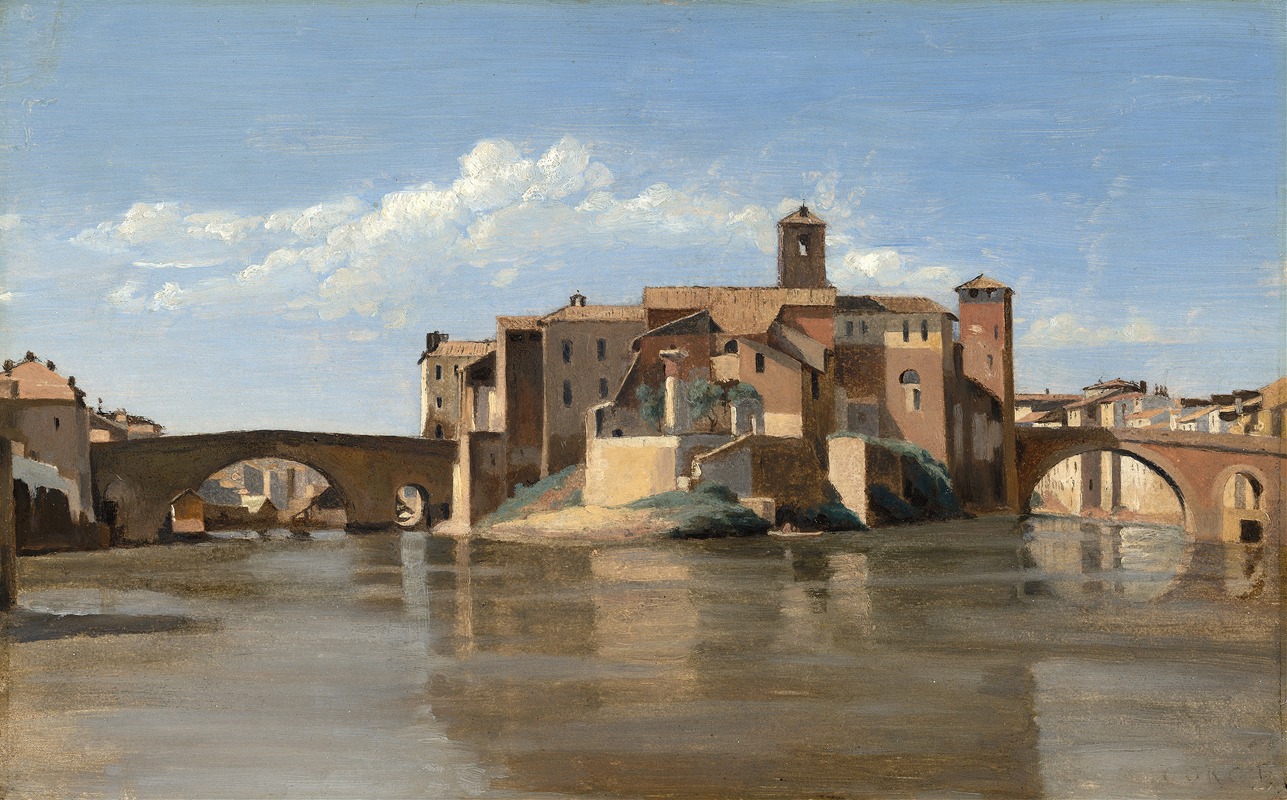
The Island and Bridge of San Bartolomeo,Rome
A hand-painted replica of Jean-Baptiste-Camille Corot’s masterpiece The Island and Bridge of San Bartolomeo,Rome, meticulously crafted by professional artists to capture the true essence of the original. Each piece is created with museum-quality canvas and rare mineral pigments, carefully painted by experienced artists with delicate brushstrokes and rich, layered colors to perfectly recreate the texture of the original artwork. Unlike machine-printed reproductions, this hand-painted version brings the painting to life, infused with the artist’s emotions and skill in every stroke. Whether for personal collection or home decoration, it instantly elevates the artistic atmosphere of any space.
Jean-Baptiste-Camille Corot's painting The Island and Bridge of San Bartolomeo, Rome is a notable work by the French landscape artist, who is widely regarded as a pivotal figure in 19th-century art. Corot, known for his contributions to both the Neoclassical and Romantic movements, often depicted serene landscapes and urban scenes with a focus on light, atmosphere, and natural beauty. This particular painting captures a view of the Tiber Island and the Ponte San Bartolomeo (Bridge of San Bartolomeo) in Rome, showcasing Corot's ability to blend architectural elements with natural surroundings.
The painting is believed to have been created during one of Corot's trips to Italy, a country he visited multiple times between 1825 and 1843. Italy played a significant role in shaping Corot's artistic style, as he was deeply inspired by the country's landscapes, ancient ruins, and vibrant light. During his time in Rome, Corot frequently sketched and painted en plein air, a practice that allowed him to study the effects of light and atmosphere directly from nature. These studies later informed his studio works, which often combined observed details with imaginative compositions.
In The Island and Bridge of San Bartolomeo, Rome, Corot depicts the Tiber River flowing gently around Tiber Island, with the bridge connecting the island to the mainland. The painting reflects Corot's characteristic use of soft, muted tones and delicate brushwork, creating a tranquil and harmonious scene. The architectural details of the bridge and surrounding buildings are rendered with precision, while the natural elements, such as the water and sky, are imbued with a sense of luminosity. This balance between structure and nature is a hallmark of Corot's work.
The Ponte San Bartolomeo, also known as the Pons Cestius, is one of the oldest bridges in Rome, originally constructed during the Roman Republic and later rebuilt in the 4th century CE. Tiber Island, historically significant for its religious and medical associations, has been a subject of artistic and cultural interest for centuries. Corot's depiction of this iconic location reflects his fascination with blending historical and natural elements in his art.
This painting is an example of Corot's ability to capture the essence of a place while infusing it with his own poetic sensibility. His works, including this one, had a profound influence on later artists, particularly the Impressionists, who admired his innovative approach to light and atmosphere. Today, Corot's paintings are celebrated for their timeless beauty and their role in bridging the gap between traditional and modern art movements.
Further details about the specific provenance or current location of The Island and Bridge of San Bartolomeo, Rome are not readily available. However, Corot's works are held in major museums and collections worldwide, where they continue to be studied and appreciated by art historians and enthusiasts alike.





